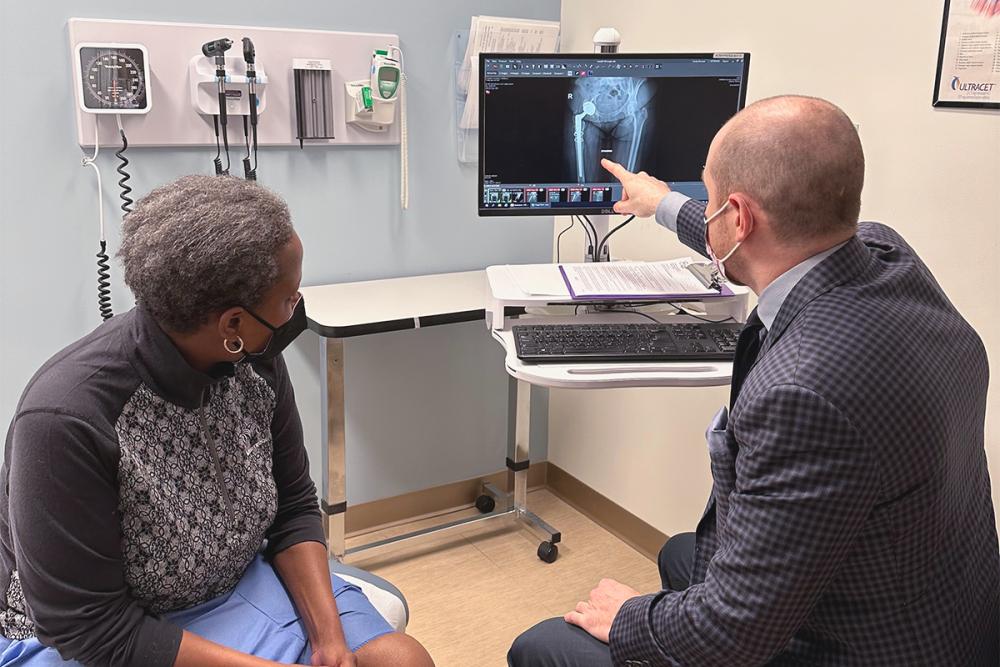Brooklynite Goes Back to Work, Leaving Her Pain Behind

Photo: SCIEPRO/SCIENCE PHOTO LIBRARY/Getty
Six years after she fell, breaking her hip and shattering her pelvis, Claudine Ettienne’s New Jersey doctors tried to repair her broken bones and joints, causing her to live with intermittent, worsening pain for years, until she turned to doctors at NYU Langone Hospital—Brooklyn.
There, orthopedic surgeon Joshua C. Rozell, MD, told Ettienne about a leading-edge robotic-assisted hip replacement that could alleviate her pain and restore her mobility. By removing her previous implant and customizing the sizing of her hip replacement, the surgery also restored more than an inch of length in her left leg, allowing her to finally walk without a limp.
“The doctor told me there would also be a robot in the operating room, but I was asleep by then, I guess, and didn’t get to meet him,” laughs Ettienne, 54, who is striding into 2023 with an all-new hip and immensely relieved that her chronic pain is a thing of the past.
“We’ve seen important technological advances in the field of hip replacement over the last five years,” says Dr. Rozell. “The use of a preoperative CT scan to understand a patient’s anatomy in complex cases, combined with the precision and customization of the Stryker MAKO robot, enables safe, meticulous, and individualized surgery. The robot we use at NYU Langone Hospital—Brooklyn continues to push the needle forward in state-of-the-art orthopedic care for our patients.”
After a brief break from her job as a result of her debilitating hip arthritis, Ettienne has received her return-to-work clearance from Dr. Rozell only five weeks after surgery. She expects to be spending long hours on her feet again, busy preparing holiday platters back at D’Agostino New York’s Gramercy Park neighborhood where she manages the deli counter. The 40-minute subway ride from her home, and the station steps? No problem, she says. “I’m looking forward to getting back to normal!”
About Robotic Orthopedic Surgery
The hip joint comprises a ball and socket. In replacement surgery, the arthritic or broken bone is removed and replaced with implants that are then secured in place. The surgery is performed using a semi-automated robotic arm that tailors the implant placement exactly to fit the patient’s anatomy using a preoperative CT scan. During surgery, minute changes down to the millimeter can be made to the operative plan. The robot assists by guiding the placement of the implants, and its software enables the surgeon to make real-time, fine-tuned adjustments to the treatment plan.
Dr. Rozell is part of the team of orthopedic surgeons at NYU Langone, which is ranked among the top 5 hospitals in the nation for orthopedics by U.S. News & World Report. He sees patients at NYU Langone Ambulatory Care Bay Ridge and NYU Langone Orthopedic Center.


